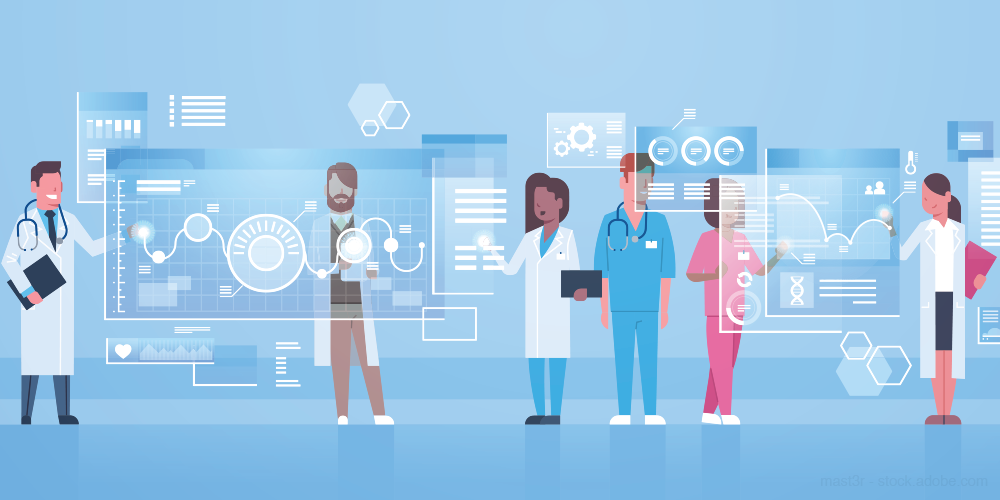The Next Big (or Small) Thing
Imagining the future of radiology technology.

One of the recent articles Diagnostic Imaging featured was about useful apps to have around.
I’ve thought on the matter before-are there any such things that would improve my professional experience? Or performance? Most of what I need/want is either already present on my workstation (including its peripheral attachments). Or could be, if circumstances warranted.
Then the notion occurred to me that modifying or supplementing the workstation was, pardon the trite expression, “inside-the-box” thinking. Another approach leapt to mind.
Harking all the way back to when I saw film-alternators exit the scene, radiology workstations have all more or less been the same sort of thing. One or more computer screens (I call my 3-monitor telerad setup “MonitorHenge”), computer tower(s) to power them, peripherals such as keyboards, mice, dictation microphones, etc.
It takes up space. MonitorHenge, for instance, claims an entire desk for itself, and then there’s the chair I’m occupying for hours at a time-better be substantial and comfortable-as well as a tangled mess of cords to connect and power it all. Loads of fun to wrangle when a connection needs to be checked or altered.
But that’s not the whole of it. One needs the setup to be in a room without too much ambient light to glare on the screens. And the place needs to be fairly quiet, to allow voice-recognition its best chance of working well. Not to mention minimizing distractions for the rad who’s trying to concentrate on his work.
So we pretty much need a dedicated room to function, or at least a chunk of a larger room, sectioned off perhaps with cubicles rom other rads. And it doesn’t take much for part or all of such a room to be rendered dysfunctional, even nonfunctional, for extended lengths of time.
The sheer bulk and complexity of all that equipment prevents a typical rad from taking the show on the road, grabbing an item or two and going to read somewhere else. I’ve heard of rads who dabble at their worklists when away from their stations-with laptops, even tablets or phones-but under most circumstances that doesn’t strike me as particularly feasible or even ethical.
Related article: 4 Future Technologies That Will Shape Radiology
How much resolution are they realistically working with? How well can they manipulate the images? And have they really found a quiet, dark place to do all this-or are they fudging it? (When I was first going into telerad, various non-medical friends and family would ask if I planned to work poolside.)
Still, much as I envisioned teleradiology one day being a thing, back when the internet was first getting popular use with snail-slow dialup, I believe the day is not far off when we will reasonably be able to pick up just one or two items and read studies anywhere we can plug into a power source and a sufficiently-speedy internet connection.
VR headsets are on the doorstep of the resolution-range that is generally accepted for diagnostic image-interpretation, and I’m sure that industry would be more than happy to manufacture higher-res units if healthcare was willing to pay for them. A VR viewer could easily show you the equivalent of three workstation-monitors, side-by-side, and allow you to enlarge/focus upon one or two of them at a time.
Perhaps something more substantial than goggles: If the unit were to incorporate dictation (microphone) and audio-output (earphones), something helmet-like would make sense, so your microphone couldn’t be confused by noise in the room with you. As with lots of workstations now, a virtual telephone would be part of the system, so no need for a separate item there.
Of course, with a full-on helmet there would need to be some sort of internal climate-control; a couple of little vents wouldn’t do. But that could even be a bonus feature: You could set your preferred temperature and humidity, even have scented plug-ins if you were of a mind for aromatherapy. Got an upper respiratory infection going on? Easy enough for one of those plug-ins to include some eucalyptus mist.
For input, forget about a mouse; a lightweight glove, communicating with the rest of the system via Bluetooth, could detect the movements of your hand(s). Different gestures could be programmed in lieu of hotkeys. I, for instance, would greatly enjoy signing off reports by giving a “thumbs up” sign.
Sufficiently self-contained and portable, a rad could much more realistically get his work done anywhere. I’d probably abandon my home-office and go spend my days on the recliner in my living-room; that thing is comfy. Or, if it’s a nice day, out on the patio. Would I take my gear on vacation with me in case something came up that my practice needed me to do? Well…let’s just say I’d be happy to have the ability to comply.
The Reading Room: Artificial Intelligence: What RSNA 2020 Offered, and What 2021 Could Bring
December 5th 2020Nina Kottler, M.D., chief medical officer of AI at Radiology Partners, discusses, during RSNA 2020, what new developments the annual meeting provided about these technologies, sessions to access, and what to expect in the coming year.